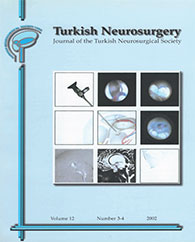Methods: Sixty-five cases of traumatic ASDH were retrospectively analyzed. Of these, 20 were selected based on two main criteria: initial Glasgow Coma Scale score <10, and time from trauma to surgery <4 hours. All 20 patients received the same medication and underwent the same surgical procedures. Initial CT findings of hematoma thickness, midline shift, subarachnoid hemorrhage (SAH), basal cistern obliteration (BCO), intra parenchymal hematoma and contusion (IPH/C) in the same hemisphere, and calculated brain-swelling factor (BSF) were assessed in each case. Neurological (functional) outcome was evaluated with the Glasgow Outcome Scale, and mortality rates related to the different parameters were calculated.
Results: The overall rates of mortality and functional recovery were 75% and 25%, respectively. Initial CT findings of greater midline shift, BCO, IPH/C, and BSF were associated with poor outcome.
Conclusions: BSF is one of the most important predictors of prognosis in patients with traumatic ASDH. On initial CT in this patient group, hematoma thickness and presence of SAH are not accurate indicators of outcome.
Keywords : Acute subdural hematoma, computed tomography, outcome




